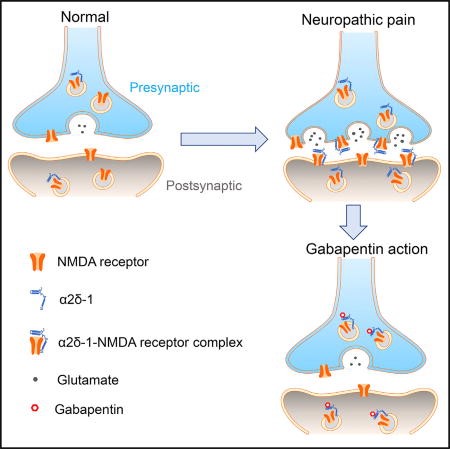 Membrane stabilizers are commonly used to treat both acute and chronic pain in children and adolescents. Which of the following is the MOST likely mechanism of gabapentin?
Membrane stabilizers are commonly used to treat both acute and chronic pain in children and adolescents. Which of the following is the MOST likely mechanism of gabapentin?
Correct!
Wrong!
Question of the Month - August 2021

Correct Answer: B. Selective inhibition on voltage-gated calcium channels containing the α2δ-1 subunit
Although early proposed mechanisms of gabapentin were interaction by activation of the GABAB receptors containing the GABAB1a and GABAB2 subunits, thereby enhancing NMDA current or inhibiting AMPA-receptor-mediated transmission to the spinal cord, more recent studies have instead favored selective inhibition at the α2δ-1 subunit of spinal N-type Ca (2+) channels.
References:
1. Chen J, Li L, Chen SR, et al. The α2δ-1-NMDA Receptor Complex Is Critically Involved in Neuropathic Pain Development and Gabapentin Therapeutic Actions. Cell Rep. 2018;22(9):2307-2321. doi:10.1016/j.celrep.2018.02.021
2. Cheng JK, Chiou LC. Mechanisms of the antinociceptive action of gabapentin. J Pharmacol Sci. 2006;100(5):471-86. doi: 10.1254/jphs.cr0050020. Epub 2006 Feb 11. PMID: 16474201.
3. Li G, Li P. (2020, Summer) The use of membrane stabilizers in acute and chronic pain. SPPM Newsletter. Retrieved from https://pedspainmedicine.org/wp- content/uploads/newsletters/2020/summer/nonopioid/Membrane%20Stabilizers%20.html
4. Sills GJ, Rogawski MA. Mechanisms of action of currently used antiseizure drugs. Neuropharmacology. 2020 May 15;168:107966. doi: 10.1016/j.neuropharm.2020.107966. Epub 2020 Jan 14. PMID: 32120063.
Although early proposed mechanisms of gabapentin were interaction by activation of the GABAB receptors containing the GABAB1a and GABAB2 subunits, thereby enhancing NMDA current or inhibiting AMPA-receptor-mediated transmission to the spinal cord, more recent studies have instead favored selective inhibition at the α2δ-1 subunit of spinal N-type Ca (2+) channels.
References:
1. Chen J, Li L, Chen SR, et al. The α2δ-1-NMDA Receptor Complex Is Critically Involved in Neuropathic Pain Development and Gabapentin Therapeutic Actions. Cell Rep. 2018;22(9):2307-2321. doi:10.1016/j.celrep.2018.02.021
2. Cheng JK, Chiou LC. Mechanisms of the antinociceptive action of gabapentin. J Pharmacol Sci. 2006;100(5):471-86. doi: 10.1254/jphs.cr0050020. Epub 2006 Feb 11. PMID: 16474201.
3. Li G, Li P. (2020, Summer) The use of membrane stabilizers in acute and chronic pain. SPPM Newsletter. Retrieved from https://pedspainmedicine.org/wp- content/uploads/newsletters/2020/summer/nonopioid/Membrane%20Stabilizers%20.html
4. Sills GJ, Rogawski MA. Mechanisms of action of currently used antiseizure drugs. Neuropharmacology. 2020 May 15;168:107966. doi: 10.1016/j.neuropharm.2020.107966. Epub 2020 Jan 14. PMID: 32120063.
 SPPM 13th Annual Meeting
SPPM 13th Annual Meeting